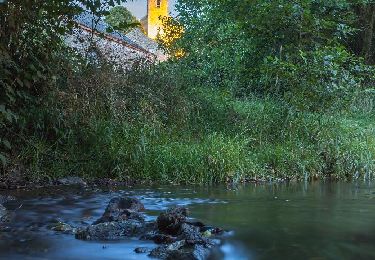

The origin of Bure is closely related to that of Tellin and there was a time when the town hall of Bure had control of a part of the village of Tellin, but also of Grupont, Wavreille, Mirwart and even probably of Han-Sur -Less. From 817 to the end of the old regime (1792 and the French Revolution), Bure depended on the Abbot of Saint-Hubert, himself accountable to the Princes-Bishops of Liège. Like the other villages in the commune, Bure went through many famines and epidemics during the French, Austrian and Dutch occupations. Then comes independence.
Bure's recent history was marked by the Second World War and essentially by the Ardennes offensive during the winter of 1944. Just after having celebrated his liberation by the Americans (September 1944), the village saw the return of the Germans at the beginning of December. The village was then the object of a bloody battle between the Germans on one side, arriving from Rochefort, and the English came to the rescue of the Americans on the other, trying at all costs to stop the enemy's advance. And in the middle, the people in the cellars of the castle. The village was the object of an intense battle of artillery, which ended on 9 January 1945. The English then entered the destroyed village and presented a desolate spectacle. Numerous stained-glass windows, crosses and other monuments remind everyone that the Ardennes offensive was stopped in Bure during the glacial winter of 1944-1945.
Bure has now found a serene face. Rhythmed by the entries and exits of the students of the College of Alzon, an old castle that sheltered the inhabitants during the war, life follows its course calmly. Since 1948 the church has been classified as a monument (the original construction was begun in 1738). It is also noteworthy that Bure is the village with the most active farmers (6). (Source: La Confrerie Tellinise De La Djaye)

Cycle


Randonnées de la Grande Forêt de Saint-Hubert GUIDE+